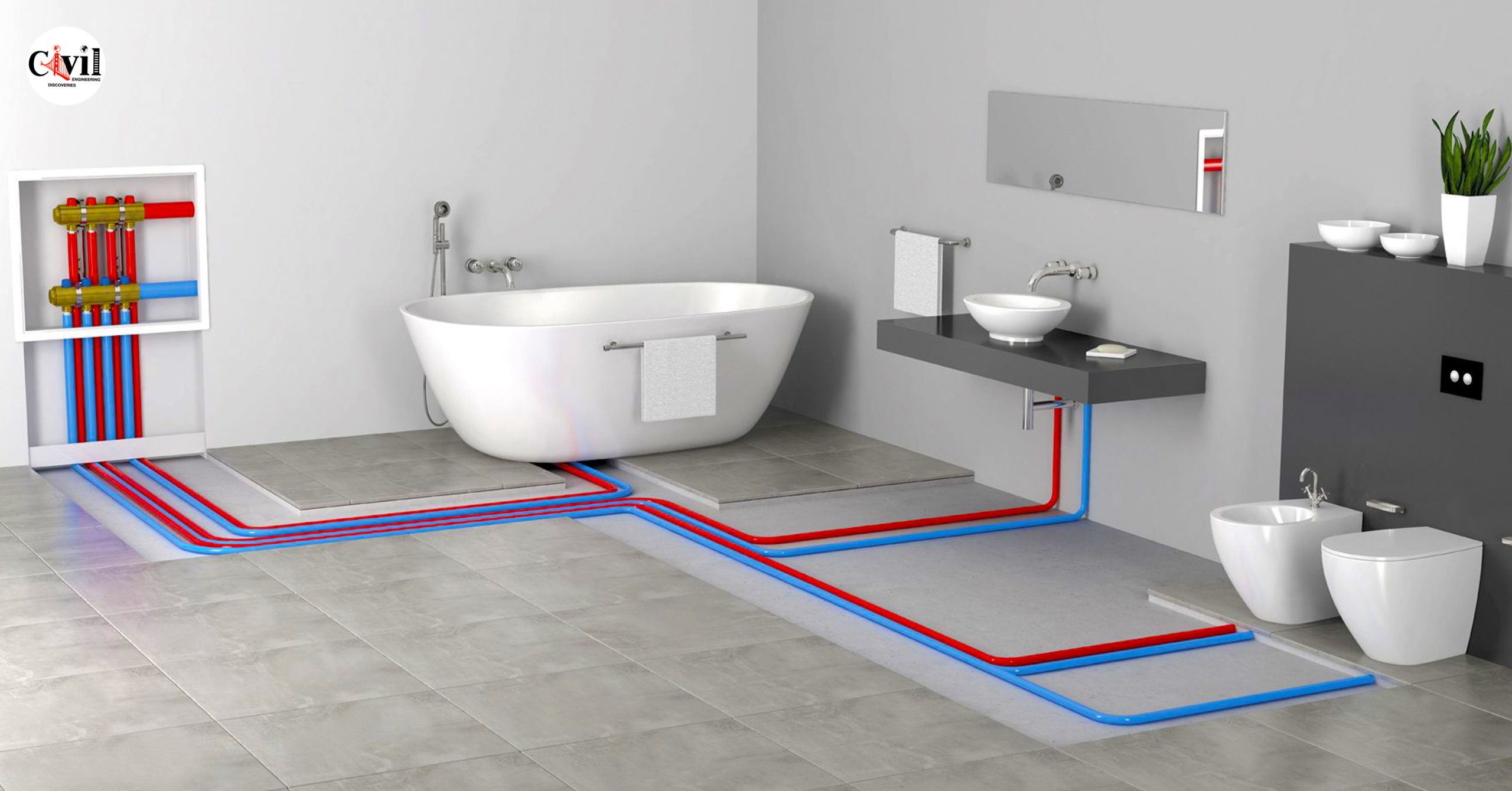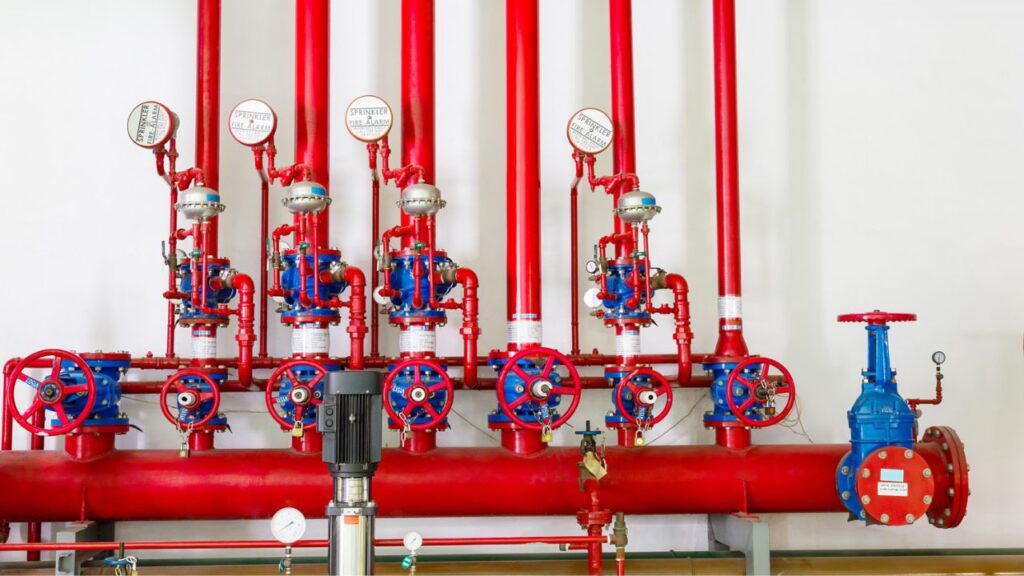What You Need to Know About Your House's Plumbing System Anatomy
What You Need to Know About Your House's Plumbing System Anatomy
Blog Article
Almost everyone may have their unique opinion on the subject of Anatomy of a House: Understanding the Components.

Recognizing just how your home's plumbing system works is important for each house owner. From providing clean water for alcohol consumption, cooking, and showering to safely getting rid of wastewater, a well-kept pipes system is critical for your household's health and comfort. In this detailed guide, we'll discover the intricate network that makes up your home's plumbing and deal pointers on maintenance, upgrades, and dealing with common concerns.
Introduction
Your home's pipes system is more than just a network of pipes; it's a complex system that guarantees you have access to clean water and reliable wastewater elimination. Knowing its components and how they interact can assist you protect against pricey repair work and ensure everything runs efficiently.
Standard Elements of a Plumbing System
Pipes and Tubes
At the heart of your pipes system are the pipes and tubes that carry water throughout your home. These can be constructed from various products such as copper, PVC, or PEX, each with its advantages in regards to resilience and cost-effectiveness.
Components: Sinks, Toilets, Showers, etc.
Components like sinks, toilets, showers, and bath tubs are where water is used in your house. Recognizing how these components connect to the plumbing system aids in diagnosing troubles and intending upgrades.
Valves and Shut-off Factors
Shutoffs control the circulation of water in your pipes system. Shut-off shutoffs are vital throughout emergencies or when you need to make repair work, permitting you to separate parts of the system without interfering with water circulation to the entire home.
Water Supply System
Main Water Line
The main water line attaches your home to the municipal water supply or an exclusive well. It's where water enters your home and is distributed to different components.
Water Meter and Stress Regulator
The water meter actions your water usage, while a stress regulatory authority makes certain that water flows at a risk-free stress throughout your home's plumbing system, preventing damages to pipes and fixtures.
Cold Water vs. Warm water Lines
Recognizing the difference between cold water lines, which provide water directly from the primary, and warm water lines, which carry warmed water from the water heater, aids in repairing and preparing for upgrades.
Drain System
Drain Pipes Piping and Traps
Drain pipelines carry wastewater away from sinks, showers, and commodes to the sewer or septic system. Catches prevent sewer gases from entering your home and additionally trap particles that might cause blockages.
Air flow Pipelines
Ventilation pipes permit air into the drain system, protecting against suction that could reduce drainage and trigger traps to empty. Appropriate ventilation is crucial for maintaining the stability of your plumbing system.
Relevance of Correct Drainage
Making certain appropriate water drainage stops backups and water damages. Routinely cleaning up drains pipes and preserving traps can stop expensive repair services and expand the life of your pipes system.
Water Furnace
Types of Water Heaters
Water heaters can be tankless or traditional tank-style. Tankless heating systems warmth water as needed, while containers save warmed water for instant use.
Just How Water Heaters Attach to the Pipes System
Comprehending exactly how water heaters connect to both the cold water supply and warm water distribution lines helps in detecting concerns like inadequate hot water or leaks.
Upkeep Tips for Water Heaters
Consistently purging your hot water heater to eliminate sediment, checking the temperature level setups, and inspecting for leaks can expand its life expectancy and enhance energy efficiency.
Usual Pipes Problems
Leaks and Their Reasons
Leakages can happen due to maturing pipelines, loosened fittings, or high water pressure. Resolving leaks quickly prevents water damages and mold and mildew development.
Blockages and Blockages
Obstructions in drains and toilets are often caused by purging non-flushable products or a buildup of oil and hair. Utilizing drainpipe screens and being mindful of what drops your drains can stop blockages.
Indicators of Plumbing Troubles to Watch For
Low tide pressure, sluggish drains, foul odors, or abnormally high water bills are indicators of prospective plumbing issues that should be attended to promptly.
Pipes Maintenance Tips
Normal Evaluations and Checks
Set up annual pipes evaluations to catch problems early. Look for indicators of leakages, rust, or mineral buildup in taps and showerheads.
Do It Yourself Upkeep Tasks
Basic tasks like cleaning tap aerators, checking for commode leakages utilizing color tablet computers, or insulating revealed pipelines in chilly climates can protect against major pipes issues.
When to Call a Specialist Plumbing
Know when a pipes issue needs specialist competence. Trying complex repair services without proper understanding can bring about more damage and greater repair work expenses.
Updating Your Plumbing System
Reasons for Upgrading
Upgrading to water-efficient components or changing old pipelines can boost water high quality, minimize water costs, and raise the worth of your home.
Modern Plumbing Technologies and Their Benefits
Explore modern technologies like clever leakage detectors, water-saving toilets, and energy-efficient water heaters that can conserve cash and decrease ecological impact.
Price Factors To Consider and ROI
Calculate the upfront expenses versus long-lasting savings when thinking about plumbing upgrades. Several upgrades pay for themselves with lowered utility bills and less fixings.
Ecological Effect and Preservation
Water-Saving Components and Devices
Installing low-flow faucets, showerheads, and toilets can substantially minimize water use without compromising performance.
Tips for Decreasing Water Use
Basic behaviors like dealing with leakages without delay, taking much shorter showers, and running complete loads of laundry and recipes can preserve water and reduced your utility bills.
Eco-Friendly Pipes Options
Take into consideration lasting plumbing materials like bamboo for flooring, which is durable and eco-friendly, or recycled glass for kitchen counters.
Emergency Readiness
Steps to Take Throughout a Plumbing Emergency situation
Know where your shut-off shutoffs lie and exactly how to switch off the water system in case of a ruptured pipe or significant leakage.
Importance of Having Emergency Situation Contacts Useful
Keep call details for regional plumbing professionals or emergency solutions readily available for fast reaction during a plumbing crisis.
Do It Yourself Emergency Fixes (When Applicable).
Short-lived fixes like making use of air duct tape to patch a dripping pipe or placing a pail under a trickling tap can reduce damage till a specialist plumber arrives.
Conclusion.
Comprehending the composition of your home's plumbing system encourages you to preserve it properly, conserving time and money on repairs. By adhering to routine maintenance regimens and staying notified concerning modern pipes innovations, you can ensure your plumbing system operates successfully for years to find.
HOW YOUR PLUMBING SYSTEM WORKS
Which Pipes Do What?
Blue lines = fresh water supply entering the building
Red lines = hot water supply entering the building
Grey lines = pipes carrying waste away from the building and venting pipes carrying gases away from the building (through the roof)
YOUR MAIN PLUMBING SYSTEMS
There are two main plumbing systems that support your home s basic plumbing needs one that brings clean water into your home, and one that sends dirty water away from your home. Connected to the toilet, bath, shower, and other faucets in your home, these two systems keep your water flowing in the right directions.
ACCESSING FRESH WATER
Fresh and clean water is brought into your home through the main water supply line . Filtered through one pipe, this water is pressured to flow into the various fixtures in your home at any given time.
This water can be sourced from a well located on your property, a pond or river (mostly cottages), or, as in most cases, from the city s municipal water treatment centre. However, it is important to note that water that is untreated, such as the water siphoned from ponds or rivers, may not be safe to drink. Personal water supplies always need to be treated for hardness and contaminants before consumed.
MUNICIPAL WATER SUPPLIES
Improve taste and odour
Remove sediment
Eliminate hardness
Reduce chlorine
COLD WATER SUPPLY VS. HOT WATER SUPPLY
Cold water flows into your home or building through the service line, which then distributes hot or cold water to your fixtures. This line is most commonly run through a central column that runs floor to floor. Hot water runs in short and straight pipes as the longer the pipeline, the more heat that will be lost in the transfer. Having shorter pipes also allows residents to access hot water more quickly.
WASTE WATER SYSTEM
Your wastewater system is divided into two parts pipes that send wastewater away from your home and venting pipes that send sewer gas away from your home. Sewage water travels through pipes that flush the water and waste towards local sewers that are operated and managed by your city or town. Most sewer systems rely on gravity to move the wastewater to where it needs to go.
The further away from your toilet or sink, the larger wastewater pipes become. This allows for waste to be disposed of from various parts of your home or business at once without pipe blockages. The angle and flow of these pipes are also essential for keeping your waste pipes clear of build up.
https://harrisplumbing.ca/how-your-home-plumbing-system-works/

HOW YOUR PLUMBING SYSTEM WORKS
Which Pipes Do What?
YOUR MAIN PLUMBING SYSTEMS
There are two main plumbing systems that support your home s basic plumbing needs one that brings clean water into your home, and one that sends dirty water away from your home. Connected to the toilet, bath, shower, and other faucets in your home, these two systems keep your water flowing in the right directions.
ACCESSING FRESH WATER
Fresh and clean water is brought into your home through the main water supply line . Filtered through one pipe, this water is pressured to flow into the various fixtures in your home at any given time.
This water can be sourced from a well located on your property, a pond or river (mostly cottages), or, as in most cases, from the city s municipal water treatment centre. However, it is important to note that water that is untreated, such as the water siphoned from ponds or rivers, may not be safe to drink. Personal water supplies always need to be treated for hardness and contaminants before consumed.
MUNICIPAL WATER SUPPLIES
COLD WATER SUPPLY VS. HOT WATER SUPPLY
Cold water flows into your home or building through the service line, which then distributes hot or cold water to your fixtures. This line is most commonly run through a central column that runs floor to floor. Hot water runs in short and straight pipes as the longer the pipeline, the more heat that will be lost in the transfer. Having shorter pipes also allows residents to access hot water more quickly.
WASTE WATER SYSTEM
Your wastewater system is divided into two parts pipes that send wastewater away from your home and venting pipes that send sewer gas away from your home. Sewage water travels through pipes that flush the water and waste towards local sewers that are operated and managed by your city or town. Most sewer systems rely on gravity to move the wastewater to where it needs to go.
The further away from your toilet or sink, the larger wastewater pipes become. This allows for waste to be disposed of from various parts of your home or business at once without pipe blockages. The angle and flow of these pipes are also essential for keeping your waste pipes clear of build up.
https://harrisplumbing.ca/how-your-home-plumbing-system-works/
We had been made aware of that editorial about Anatomy of a House: Understanding the Components through a buddy on another web property. Are you aware of somebody else who is in the market for the niche? Please feel free to promote it. Thanks for taking the time to read it.
Visit Url Report this page